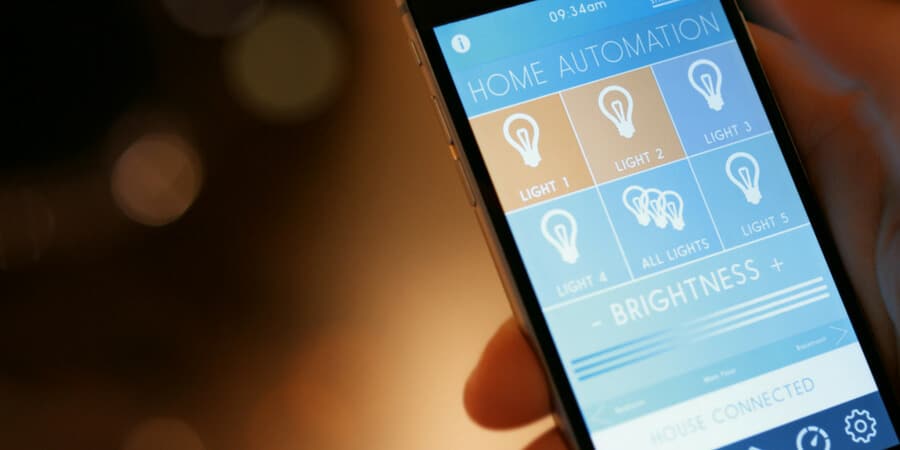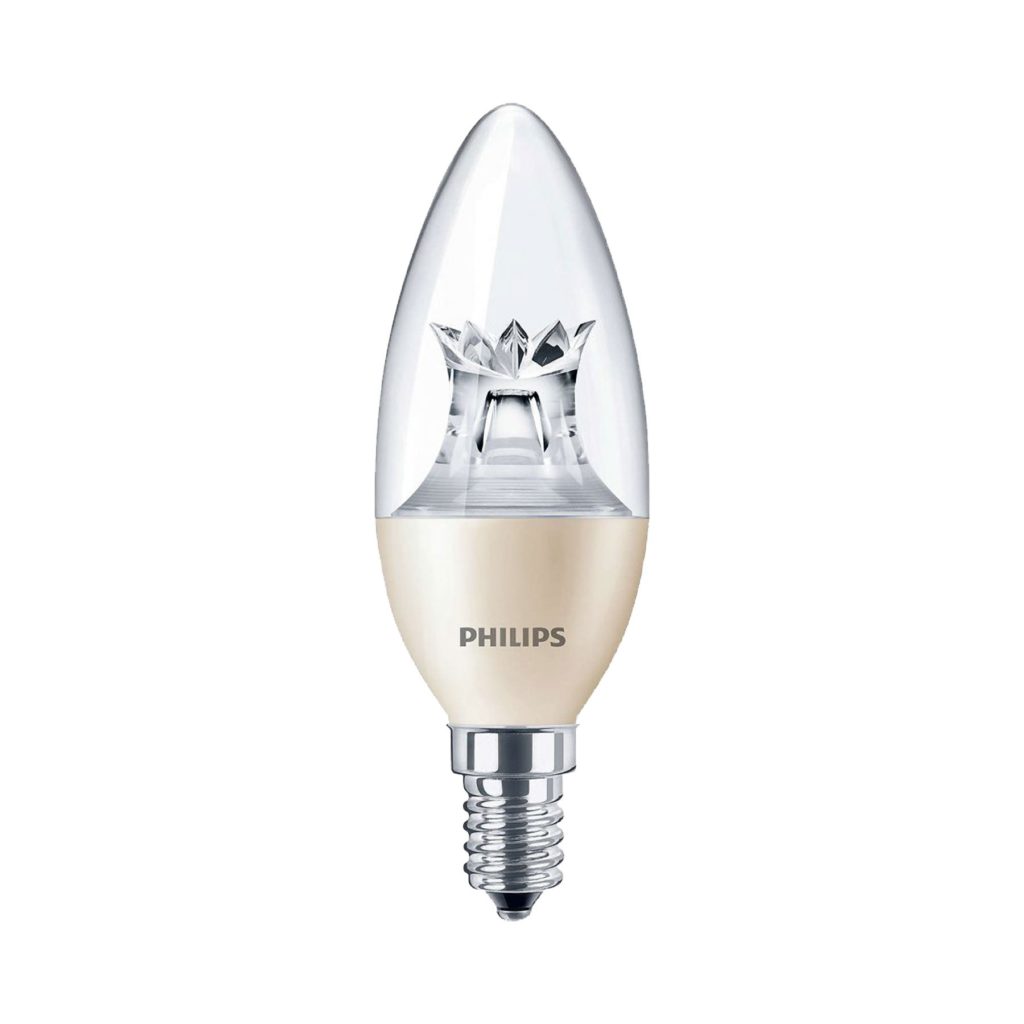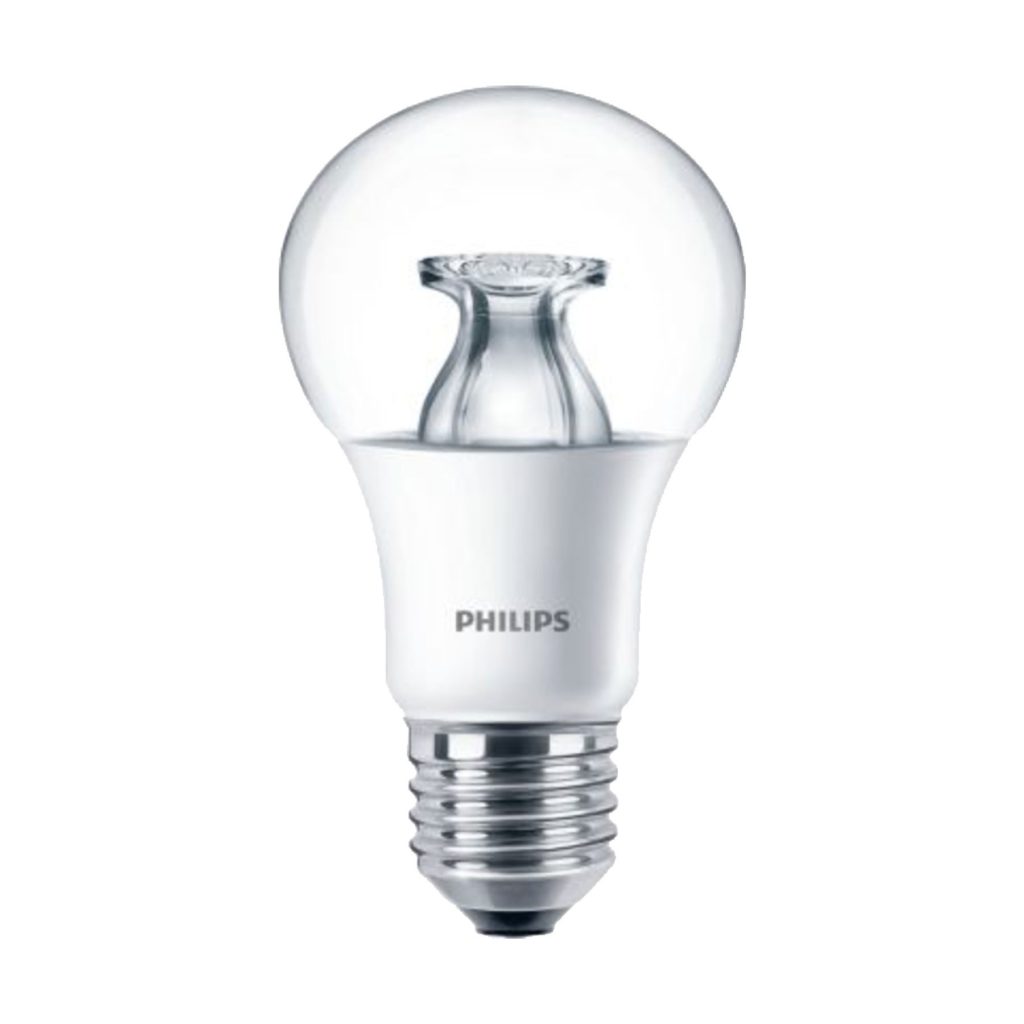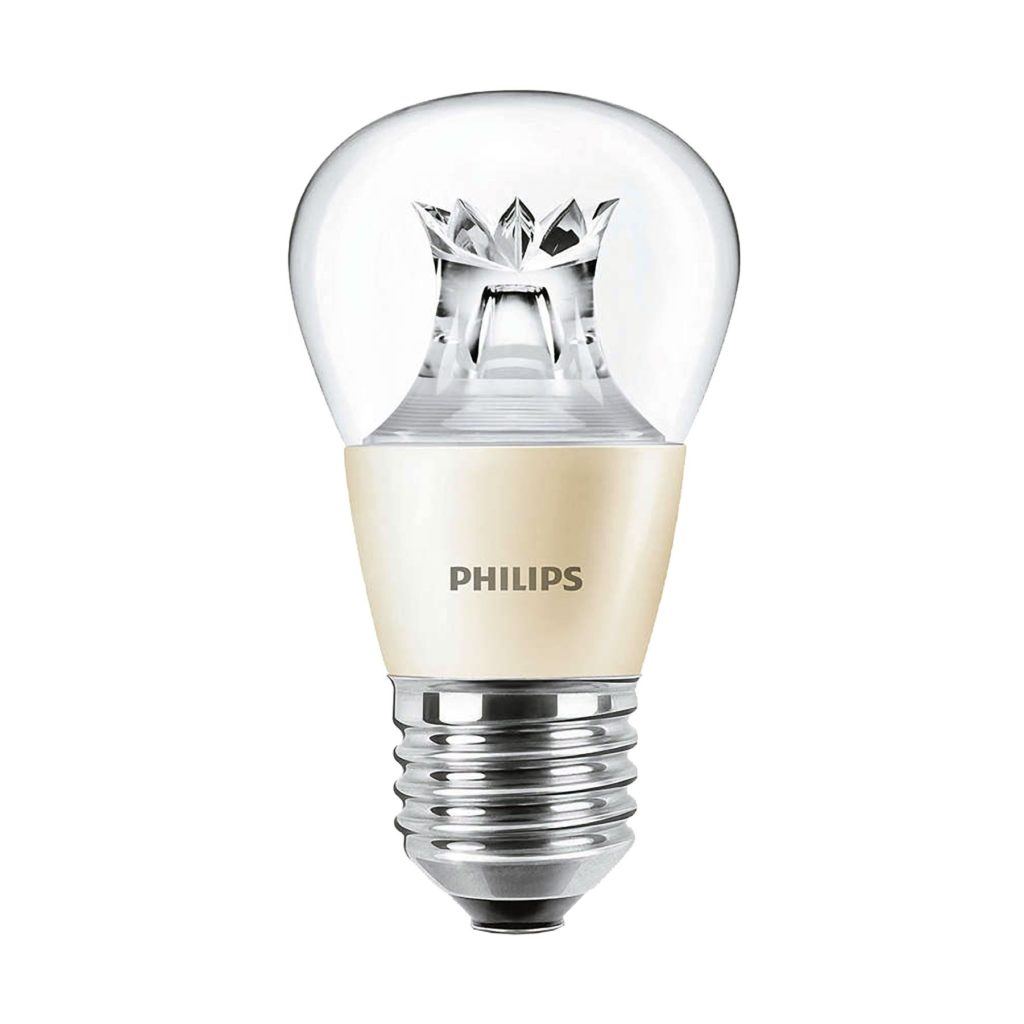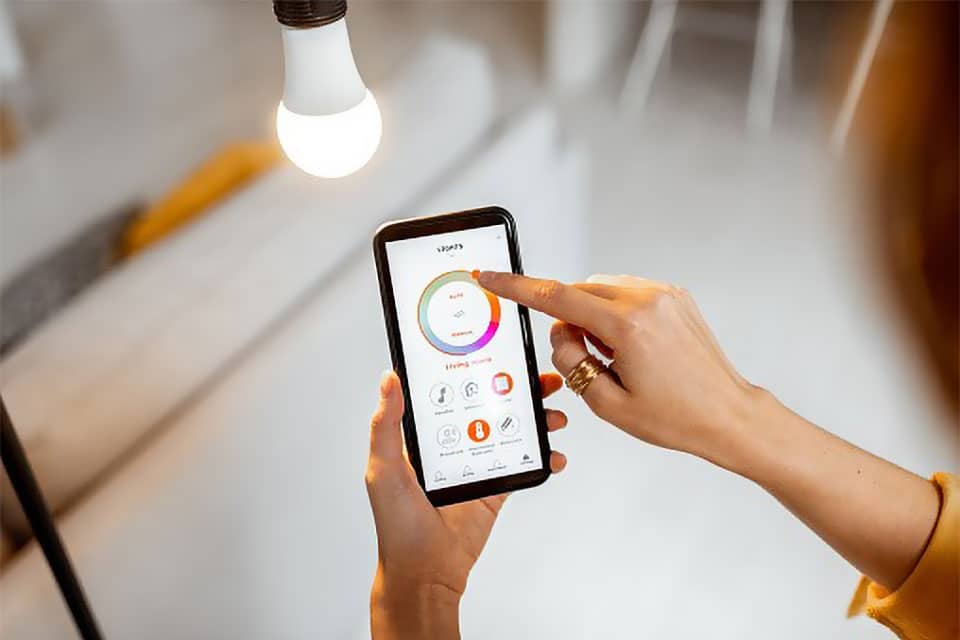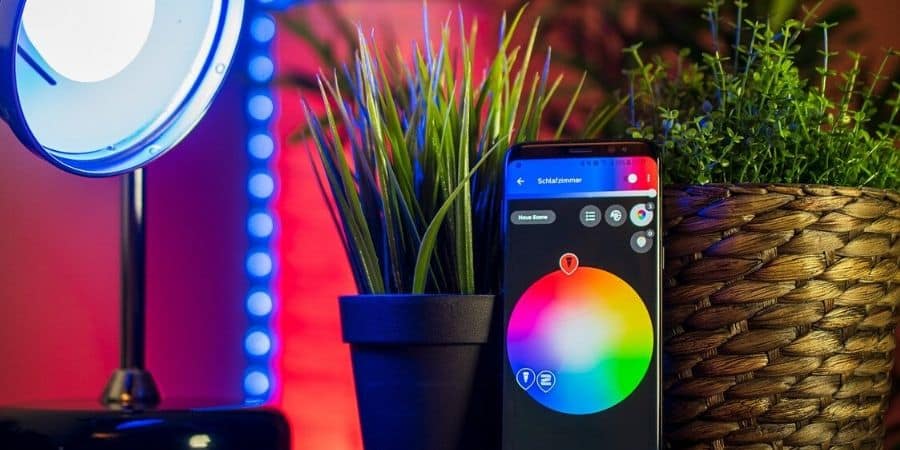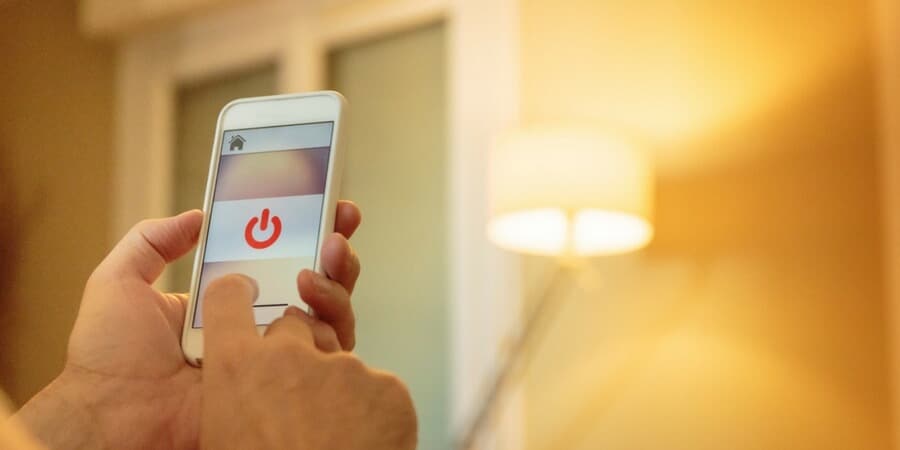By now, you’ll likely have heard all about smart home products, though you may be baffled by what they do and how they work. Smart home products include a wide range of electronics designed to make your life more convenient, including things like smart light bulbs and thermostats you can control from your mobile. So what exactly is smart lighting, and how can you incorporate it into your “dumb” home? Let’s take a look.
What is Smart Lighting?
Smart light bulbs are light bulbs that can be connected to your WiFi or Bluetooth, and paired with an electronic device—typically your mobile phone or smart home device like the Apple HomeKit, Amazon Echo, or Google Home. Once these bulbs are paired with your device and connected to the appropriate app, you can use the app in lieu of physical controls (like light switches) to adjust the lighting in any room with smart lighting installed.
PRO TIP: If you find yourself struggling with the smart lighting setup process, you’re not alone—28% of people surveyed for a ‘Smart Home Shoppers’ study couldn’t get their smart lighting to work. Make sure you thoroughly read the instructions, check the manufacturer website for FAQs and additional information, and don’t be afraid to reach out to the retailer or manufacturer if you need help.Depending on the capabilities of the smart light bulb, after installation, you should be able to:
- Turn your light bulbs on and off without using the switch—in some cases even if you aren’t home!
- Schedule lights to come on and turn off automatically at set times—perfect if you want to get away for the weekend or have your lights on when you get home from work in the winter without wasting energy during the day.
- Connect them to your smart home security system for additional home security customization options and alerts.
- Dim or raise the light levels without getting up.
- Change the colours—depending on the light bulb, this could be as simple as going from cool to warm white in the evenings or as complex as changing through all the colours of the rainbow.
- Create special “light recipes” to suit any mood or occasion, meaning you can create different setting profiles for watching a movie, mood lighting for dinner, or waking up in the morning.
- Play music – some smart light bulbs have speakers built in, allowing them to play audio.
With some additional accessories or connected apps (such as IFTTT), you can also create rules that change the colour of the lighting to let you know when you receive message on your phone or if you receive a weather alert.
All About the Bulbs
Smart light bulbs are exclusively LEDs, so on top of their fancy new features, they also boast all the energy-saving benefits of a traditional LED bulb, the same (or better) colour range, and are typically available in most standard shapes, sizes, and bases. With that in mind, there are some additional things to consider before upgrading to smart bulbs:
- Cost – Because smart lighting is a relatively new technology, these bulbs will cost more than your standard LED bulb. How much exactly will depend on the type of features you are looking at—plain smart bulbs will have a lower price tag than ones that can glow all the colours of the rainbow. However, like all new technologies, these bulbs will gradually come down in price. In the meantime, you may find that the ability to tell your lights to turn off, change colour, and brighten or dim, may be well worth the added expense.
- Compatibility – Not all smart home devices and smart light bulbs are compatible. Check the packaging to make sure the light bulbs you want to buy will work with the smart home setup you already have in place. Most systems should take third party light bulbs, but they may not work as well.
- Security – Like all devices that connect wirelessly, there is the risk of interference from unauthorized parties. There have been recognized security issues with Internet of Things (IoT) devices, but if you regularly update firmware and install patches, keep yourself apprised of the latest news, create unique strong passwords, and otherwise maintain good security practices, you can safely enjoy the luminous and easy-to-adjust glow of smart home lighting.
If you don’t feel that smart home lighting is right for you, or you’re not ready to make the switch just yet, you can still enjoy some of the luxuries smart bulbs bring to the table. Philips DimTone light bulbs are dimmable LEDs that change colour as you dim them, from a warm 2700k shade to a very warm, candle-like 2200k:
Look Smart, Light Smart
Smart lighting is a fun addition to any home lighting design plan, opening up new possibilities for creating a wide range of ambience options, and incorporating lighting more completely and conveniently into your daily routine.
Learn more about LEDs in our Ultimate Guide.





















































































